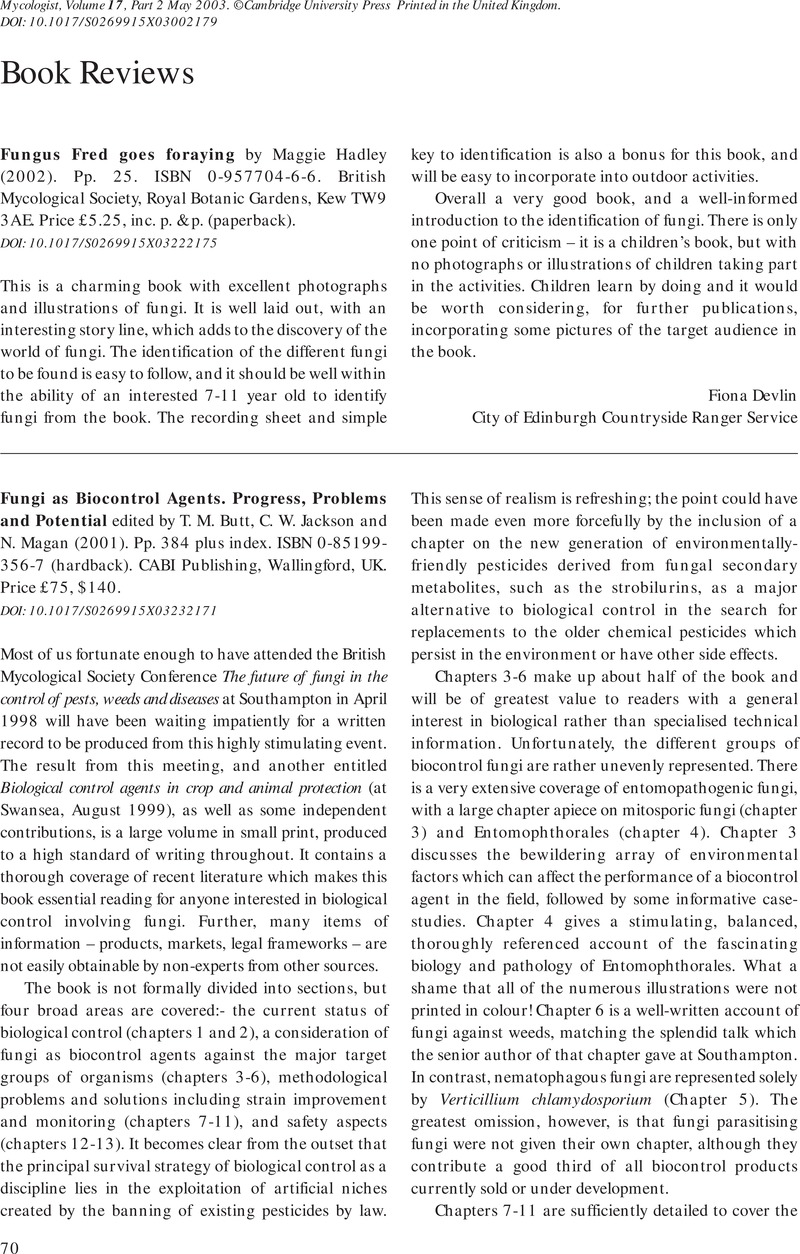

Fumonisin B1, the most predominant and toxic mycotoxin accounts for 70% of the total fumonisins and receives worldwide attention compared to FB2, FB3, and FB4 ( Table 1). verticillioides in cereals, is categorized into FB1, FB2, FB3, and FB4, based on the structure and hydroxyl group. Mycotoxins such as fumonisin B produced by F. Ī major focus by scientists across the globe is on mycotoxigenic fungi since they are global contaminants of cereals and cereal-based food products. Among 103 Fusarium species screened from the cereal samples collected from Karnataka, India, 64 isolates were found to be fumonisin-producing F. verticillioides was the predominant species associated with maize grain samples. Among the 135 cereal samples collected from southern India, 69 were associated with Fusarium contamination, among which 51 samples showed F. verticillioides was reported in poultry and animal feed made up of wheat bran and maize pellets. screened maize grain samples from Brazil and documented nearly 96% frequency of F. verticillioidesįusarium verticillioides distribution is ubiquitous, mainly associated with maize, rice, sugarcane, wheat, banana, asparagus, and sorghum. The International Agency for Research on Cancer (IARC) characterized FB1 as a possible group 2B carcinogen, which can cause toxicity in humans and several animals like rats, horse, mice, and rabbits. verticillioides, reports indicate large numbers of cases of esophageal cancer, among humans, in Transkei, South Africa, Northern Italy, Linxhian, China, the south-eastern United States, and Golestan, Iran. On consumption of the corn associated with fumonisins or contaminated with F. When the blood–brain barrier was permeated in young carp, neurotoxicity due to FB1 was reported. reported that hydrolyzed FB1 (HFB1) interferes with sphingolipid metabolism without causing any neural tube defects in a mouse model. Pulmonary edema syndrome (PES) and hydrothorax were observed in pigs on consumption of fumonisin-B1-contaminated corn screenings and through intravenous injections of fumonisin, respectively. In horses, being fed with naturally contaminated corn, corn screenings, and corn-based feeds or intravenous injection of fumonisin leads to leukoencephalomalacia (LEM).
#Biocontrol agents pdf skin#
Studies have shown that consumption of mycotoxin-contaminated cereals can affect the lungs, liver and kidneys in animals and cause wounds, skin lesions, and even lead to cancer in humans. Certain methods such as hand-sorting of contaminated cereals has been practiced and seem to be partially effective, remaining as the last line of defense in reducing fumonisin and mycotoxin exposure. In developing countries, governing measures are poorly enforced by farming communities.

In addition, the application of selected physical treatments, chemicals, and biologically based strategies substantially reduce fumonisin contamination in cereals and cereal-based products. Developed countries uphold food suppliers’ and retailers’ high standards by implementing regulatory controls involving good agricultural management practices, hazard analysis and critical control point (HACCP), addressing food safety.

Mycotoxigenic contamination of feeds, cereals, and cereal-based food by Fusarium verticillioides adversely affects the health of humans and animals leading to a decline in the economy and international trade. verticillioides and production of fumonisin B1 have been addressed in the present review. The different methods, challenges, and concerns regarding the biocontrol of F.

Hence, biological control methods using microorganisms, plant extracts, antioxidants, essential oils, phenolic compounds, and other advanced technologies such as growing disease-resistant crops by applying genetic engineering, have become an effective alternative for managing F. Physical and chemical approaches have been shown to reduce fumonisin B1 concentrations among feeds and food products but have proved to be ineffective during the production process. verticillioides growth and its associated fumonisin from cereals cannot be overemphasized considering the significant health hazards associated with its consumption. Being a potential carcinogen, fumonisins continue to receive major attention as they are common contaminants in cereals and its processed food products. verticillioides produces fumonisins as the major secondary metabolite along with trace levels of beauvericin, fusaric acid, fusarin C, gibberiliformin, and moniliformin. The fungus is mainly associated with maize, rice, sorghum, wheat, sugarcane, banana, and asparagus and causes cob, stalk, ear, root, crown, top, and foot rot. Fusarium verticillioides is the most predominant fungal phytopathogen of cereals and it is posing great concern from a global perspective.


 0 kommentar(er)
0 kommentar(er)
